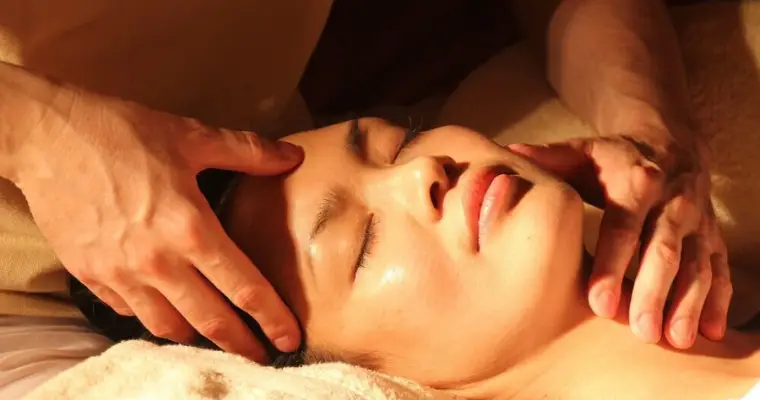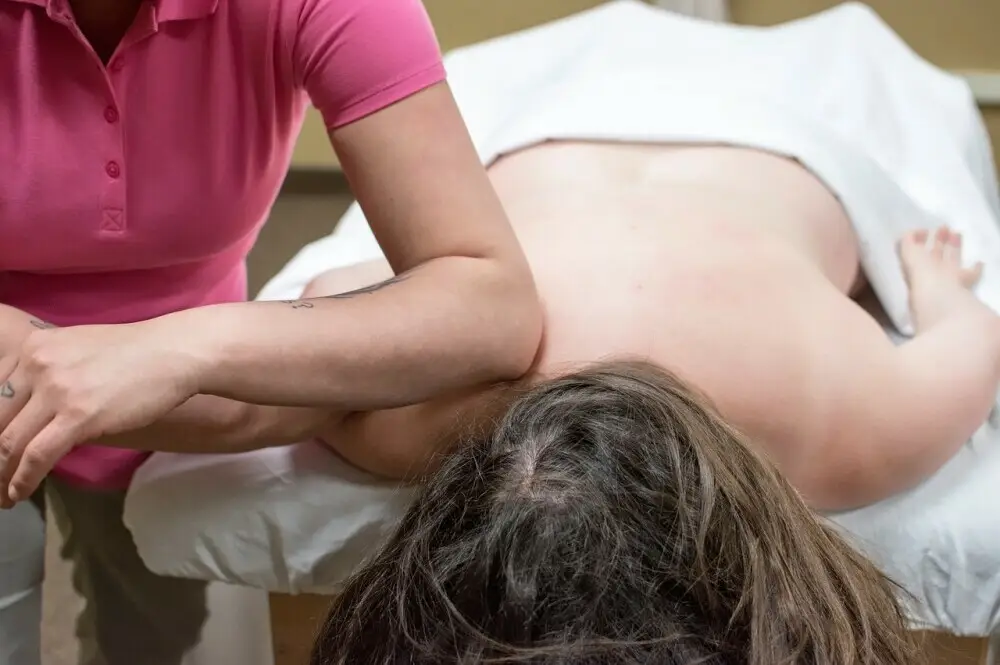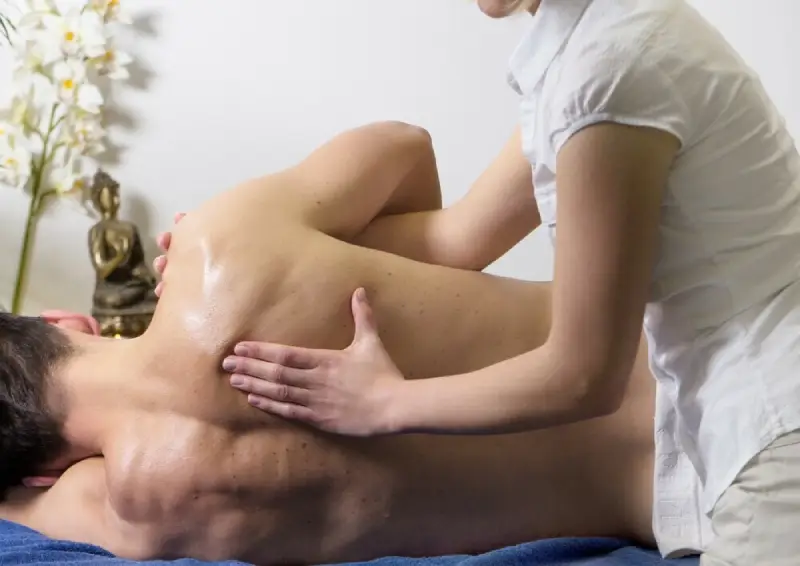Art of Rolfing Bodywork

In this article, we’re going to introduce you to the Art of Rolfing technique. A unique form of bodywork that’s been gaining traction in the wellness community.
This isn’t just about muscles and tendons; it’s also about improving overall bodily alignment and function.
You may not have heard of Rolfing, but today, you’re going to find out about its intriguing origins. And most importantly how it could be a key to unlocking your body’s true potential.
Rolfing, developed by Dr. Ida Rolf in the mid-20th century. This technique taps into the connective tissue network in the body, known as fascia.
Furthermore, the goal is to realign and balance the body by manipulating this fascia. Think of it as ‘organizational bodywork’.
It’s a process to help you with issues stemming from misalignments that can cause pain and discomfort.
I had a Rolfer tell me many years ago, Rolfing will help you, “Stand Up inside yourself”. He was correct, my body made a remarkable turn around and I am forever grateful!
What exactly sets Rolfing apart?
The answer lies in its focus on improving body structure and posture over the long term, rather than providing a quick fix for tension or discomfort.
Rolfing practitioners use hands, elbows, and even knees to remodel the body’s connective tissue network, encouraging a more upright and relaxed posture.
A unique aspect of Rolfing is the ten-series session structure. It’s a progression of treatments that build on each other, addressing different body parts and aspects of movement, all tailored to the individual’s needs.
Specifically, this series is essential for the gradual and lasting transformation that Rolfing aims to achieve.
Unlike temporary solutions that merely mask symptoms, Rolfing addresses the root causes of discomfort and dysfunction, facilitating long-lasting changes in the body’s structure and function.
Athletes, dancers, and performers often turn to Rolfing to optimize their physical performance and prevent injuries. This technique aids in improving alignment, flexibility, and body awareness.
The art of Rolfing helps individuals achieve peak performance while reducing the risk of overuse injuries.

Next, I’m going to walk you through some of the remarkable health benefits that come with Rolfing.
Whether you’re dealing with a specific issue like chronic pain or just looking to enhance your overall well-being.
This next section will reveal why Rolfing’s approach to body alignment might be the game-changer you’ve been searching for.
What Can Rolfing Do For You?
Possible Health Benefits:
Rolfing isn’t just about temporary relief; it’s about lasting change. It goes beyond surface-level symptoms to address body alignment and overall balance.
Here, we’ll get into how Rolfing might just be the boost your body has been awaiting.
First off, posture and alignment are at the forefront of Rolfing’s benefits. By working on connective tissues called the fascia, Rolfing aims to realign your body and improve posture.
This isn’t only about standing taller; it’s about alleviating the stress and strain that misalignment puts on your body.
Chronic pain sufferers often find a friend in Rolfing. Because Rolfing touches on deeply rooted tension areas in the body.
Many people report significant reductions in discomfort, especially in long-term trouble spots.
It’s not uncommon for clients to enjoy newfound mobility and a noticeable reduction in aches that have persisted for years.
Rolfing doesn’t stop at the physical:
The therapy can also be a balm for the mind. In my experience, releasing bodily tension can lead to a decrease in stress levels and potentially nurture a greater sense of wellbeing.
Many clients report that Rolfing has been a key player in their emotional health, helping them to feel more grounded and at ease.
Don’t just take it from me. Stories and testimonials abound from individuals who have experienced remarkable transformations in their body’s functionality and overall health.
While research is ongoing to quantify these benefits, the anecdotal evidence is strong and continues to draw newcomers to Rolfing each year.
Rolfing Experience Is It Painful?
I’m going to get straight to the point: Rolfing has a reputation for being intense, but is it actually painful?
Let’s unpack this. First off, Rolfing involves deeper tissue manipulation, which can lead to discomfort, especially in areas where you’re holding tension.
During a Rolfing treatment, you might experience sensations that are quite different from your typical massage.
The practitioner works on connective tissues, aiming to realign your body and improve posture. So, while some moments can feel uncomfortable, I want to clarify that it shouldn’t be outright painful.
Communication is key:
A good Rolfer will encourage you to share feedback throughout the session. This dialogue ensures that the work is done within your tolerance levels.
If you’re feeling too much discomfort, it’s essential to speak up. Your practitioner can adjust their technique to make it more comfortable for you.
Strategies to ease discomfort include breathing techniques, which can help release tension and facilitate the Rolfing process.
From my experience, being mentally prepared for the intensity can also make a big difference in your experience.
Now, let’s examine the financial aspect, Rolfing is an investment in your body’s well-being.
In this next section, we’ll explore the costs associated with this technique and how it compares financially to other therapeutic interventions.
Understanding the Costs of Rolfing
Thinking about trying Rolfing? You’re likely curious about what it’s going to cost you.
Generally, the cost of a session can range widely based on several factors, and I’m going to help you understand why.
Location plays a significant role in pricing. Just like the cost of living varies from city to city, so does the price for Rolfing sessions. I’ll explain the factors that influence what you’ll pay.
The practitioner’s expertise is another key factor. Rolfing is a specialized field requiring extensive training.
Professionals with more experience or advanced training may charge more, reflecting the quality of their service.
Session length also affects the cost. Typically, Rolfing sessions last between 60 to 90 minutes.
Some practitioners offer longer sessions or intensive packages, discuss this with your Rolfer and pick the options that best suit your needs.
Compared to other forms of bodywork like massage therapy or chiropractic care, Rolfing can seem unique.
Its specialized nature means it might come at a different price point, but you’ll find out why that might be a worthwhile investment.
Don’t worry too much about insurance initially. Depending on your coverage there is a likelihood of some healthcare plans will be covering your Rolfing session.
Check with your Rolfer and Healthcare provider for the options available.
So, you should have a clear picture of what to expect financially when you choose to incorporate Rolfing into your personal healthcare routine.
Finding the Right Practitioner
I’m going to help you understand the process of finding a qualified Rolfing professional. This will ensure that your journey toward better body alignment and wellness is as effective as possible.
Choose someone that resonates with you; the importance of selecting a practitioner with the proper certification from the Dr. Ida Rolf Institute.
You’ll find out what to look for in a Rolfing professional: from their years of experience to their approach to therapy, and how they tailor their practice to your individual concerns.
Most of all, choosing one who aligns with your personal comfort and specific needs cannot be overstated.
I suggest getting familiar with the practitioner’s policies, outlining your health history, and discussing your goals upfront.
In my opinion after 20 years of Rolfing myself, knowing what to expect and preparing for your session can immensely influence your overall experience.
And remember, your first session doesn’t need to be your last. This is about fostering a working relationship with a practitioner.
One who is dedicated to, not just your structural well-being, but also your journey toward holistic health.
Together, you can get on a path of self-discovery and transformation, unlocking the full potential of your body and mind.

Embracing the Art of Rolfing
In conclusion, Rolfing offers a holistic approach to health and wellness that addresses the connection of the body, mind, and spirit.
By restoring balance and alignment within the body, Rolfing promotes optimal function, resilience, and vitality.
Whether you’re seeking relief from pain, improved performance, or simply a deeper connection with yourself.
Rolfing may hold the keys to unlocking your body’s full potential.
Thank you for joining us on this exploration of the art of Rolfing. May your journey be filled with insight, growth, and abundant health and vitality!
Please, if you are looking for support on your wellness journey feel free to contact us directly if you have any questions.
Subscribe now to get a user-friendly “Get Started” guide featuring 12 tips for transitioning to a WFPB diet.
Cheers,
Plantaful Life Team
Disclaimer: The information shared in this blog post and on our website is for educational and informational purposes only. We are here to inspire and support you on your plant-based journey. However, always prioritize your health and consult with your trusted healthcare provider for personalized advice. By using our website, you acknowledge and agree that you have read and understood this medical disclaimer. Additionally, you acknowledge the significance of seeking professional medical advice for your specific health needs.
References:
Your Health is Wealth – Plantaful Life
What is Rolfing? – Dr. Ida Rolf Institute
What Is Rolfing and How Is It Different From Massage? (clevelandclinic.org)